R'n'B Weekend Zagreb Project Announced
The organisers of the renowned Rovinj Weekend Media Festival, Tomo Ricov and Boris Kovaček, announced on Thursday at the Zagreb cafe "In the Backyard" their new project R'n'B Weekend. R'n'B Weekend Zagreb is a combination of a conference, a fair and a festival aimed primarily at encouraging excellence in the hospitality and food and beverage industries. The four-day event held at the HAZU Glyptotheque in Zagreb will bring together some of the world's experts in the field. The Glyptotheque of the Croatian Academy of Arts and Sciences (HAZU) will host the R'n'B Weekend Zagreb (Restaurants & Bars Weekend) from 23 to 26 May.
Boris Kovaček said that the gastronomy industry is undoubtedly one of the most important parts of the tourism business and announced exciting panels that will cover, among other issues, the modern Croatian cuisine and the gastronomy development strategy. The festival will be divided into three topical categories – food, drinks and coffee.
Matija Belković and Matija Hrkać from the Cogito Coffee company announced masterclass workshops and lectures related to the industry and culture. "Since coffee has a special impact on the Croatian culture, it will also have a separate part of the programme – Zagreb Coffee Weekend, which will be based around lectures by leading world experts in the coffee industry, workshops and tastings of various types of coffee," explained Belković.
The press conferences and the barbecue "In the Backyard" brought together a number of well-known representatives from Croatian gastronomic scene, including Hrvoje Kroflin from Mano2, Jurica Jantolek and Borna Janeš from Pod Zidom, Matija Jagić from Brokenships Bistro, and Ivan Zidar from Mason Burgers & Stuff. Everybody enjoyed the barbecue, with meat provided by the Meat the King and prepared by chefs from the Lobby restaurant.
Additional insight into the festival programme was given by one of the most famous Croatian chefs, Mate Janković, one of the Weekend participants. "The festival is a kind of celebration of the synergy of people who run it and are strong in their niches – events, music, coffee, cocktails, food, drinks... The programme will enable professionals and everyone else to expand their gastronomic horizons. The festival will offer something for everyone. One of the topics will be the tuna and how to treat it, while other programme details will be revealed soon at several promotional events that will precede the festival itself," said Janković.
Perhaps the most exciting part of the festival includes food, and it was presented by the famous Croatian gastro-journalist and consultant Hrvoje Petrić. "This year the emphasis will be on salt, so we will have an interesting panel about Croatian saltworks and a masterclass on the application of salt in modern cuisine, which will further confirm Croatia as a salt country. Also, we are delighted to have the biggest stars of sourdough bread production in the region, and we have the best of the best of the Croatian pastry scene," said Petrić.
The relaxed atmosphere "In the Courtyard" was created by the music played by DJ Tomo Ricov, while Marin Nekić performed a live cocktail show and announced the barista part of the festival. "The panels and workshops will cover the bar industry, which includes hotels, restaurants and bars in Croatia, with the aim of raising the quality of the touristic offer and the awareness among professionals and customers. We are preparing interesting topics, and one of them, which I believe will be especially interesting to the audience, is what is the new gin," Nekić announced.
More news about festivals in Croatia can be found in the Lifestyle section.
2019 NxGn: Two Croatian Footballers Selected Among 50 World's Best Teenagers
Two Croatian footballers, Antonio Marin and Ante Palaversa, have been selected as the world's greatest young talents.
Croatian Airports Expect 11 Million Passengers this Year
It’ll be another busy year for Croatian airports as some 11 million passengers are expected to travel through them in 2019. Recall, this is quite an increase from last year’s 10.5 million. But who’s counting.
Here’s a breakdown of what Croatia’s nine commercial airports expect this year, courtesy of Ex-Yu Aviation on March 21, 2019.
Zagreb Airport: The airport in Croatia’s capital expects a 5% increase in passengers in 2019, with a 3% growth in operations. This is thanks to several carriers boosting capacities this summer, including Iberia, Vueling, LOT Polish Airlines, Qatar Airways, and Eurowings. Many other airlines, however, will expand operations.
Split Airport: It’ll be an exciting year for Split airport, which will open their new terminal in June. As works are still aggressively underway to meet the summer deadline, Pero Bilas, Deputy General Manager of Split Airport, announced the usual 5 to 10% increase in passengers this year. Split airport will also see 50 airlines this summer, with many new carriers including Air France, British Airways, Luxair, Ryanair and Laudamotion.
Dubrovnik Airport: It’ll be another solid year for Dubrovnik airport, which expects passenger growth of 4.59% in 2019. Most travelers are expected from the United Kingdom, France, the Netherlands, Sweden, Poland, and the Czech Republic. Nearly 70 airlines will operate to the city this year, and most exciting is the launch of the American Airlines flight from Philadelphia, which will connect the US to Croatia for the first time in 28 years. Also impressive is that Flydubai will continue with trips this summer and Ryanair will launch flights to Dubrovnik. A significant increase in traffic should be seen from London, Paris, Amsterdam, and Dublin said Dubrovnik airport general manager Frano Luetić.
Pula Airport: After a record 2018, Pula airport projects growth of 7% this year and expects to handle 750,000 travelers. Eleven thousand flights will operate out of the airport in 2019, with airlines EasyJet, Laudamotion, TUI Airways, Jet2, and Condor all introducing new services. Brexit, however, could affect the airport this year, as 32% of passengers traveling through Pula are British.
Zadar Airport: It’ll be a big year for Zadar airport as Ryanair introduces eight new routes from the city. Easyjet will add two new lines, while Iberia Express, Air Serbia, Transavia, Laudamotion and Condor will launch seasonal flights this summer. Zadar airport will count 16 airlines and 51 trips to 31 destinations in Europe this year and should count an additional 100,000 passengers to last year’s 603,819.
Rijeka Airport: Lufthansa, Air Serbia, TUI Airways and Volotea will launch operations at Rijeka airport this year, which should see a 16% increase in passengers. Operations at Rijeka airport should also increase by 6%. Many airlines will also boost activities to Rijeka, such as Transavia, who will increase flights by 300% compared to last year.
Osijek Airport: A growth of 11% and 74,300 travelers are expected at Osijek airport this year. While Wizz Air will boost operations on its Basel service, Eurowings will begin their service from Cologne forty days earlier.
Brač Airport: Dalmatia’s island airport should see around 31,000 travelers in 2019, which is the same as last year. Recall, the airport is currently in the process of expanding its runway and terminal, which is the primary focus. Works should begin in 2020.
Lošinj Airport: To conclude, the seasonal Lošinj airport will maintain flights from Zagreb and Lugano on Silver Air this summer, while the Czech carrier will introduce a new operation to Venice twice a week, replacing their Pula route.
You can read the full report on Ex-Yu Aviation.
To read more about travel in Croatia, follow TCN’s dedicated page.
Croatia Can Be Central Europe Medical Tourism Hub in 5-10 Years: Interview
March 20, 2019 - More positive noises for the Croatian medical tourism industry from International Clinic Mentor Daniel Coulton Shaw, following his facilitation of the 5th Annual Medical Tourism Conference in Zagreb last week.
He arrived with a boy band in Slovakia and helped to build a friend's dental website, only to turn that business into Slovakia's leading dental tourism clinic. As if that was not enough, he then put together GCR, Global Clinic Ranking, a business which - along with his clinic mentoring - makes Daniel Coulton Shaw not only a regular visitor to the Croatian medical tourism scene, but ideally placed to comment on the direction Croatia is, and can be, taking. TCN caught up with Coulton Shaw after the conference.
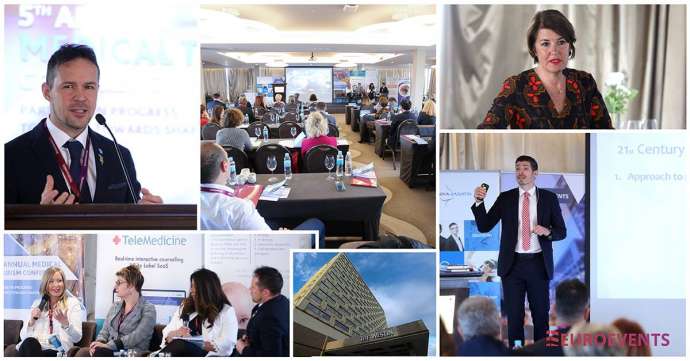
1. You have just made your latest trip to Zagreb where you were facilitating at the 5th Annual Medical Tourism Conference at Hotel Westin. How did it go and what did you learn?
I had the pleasure of returning to the hotel Westin in Zagreb again for yet another medical tourism conference (I attended the HTI conference there last year).
The main difference for me with this particular conference (MTCE organised by EuroEvents annually) are the practical learnings and networking opportunities available.
As rather than "fluffy talk" and irrelevant statistics - I prefer data and ideas that I can apply immediately to the clinics & hospitals that I work with as well as notice what "doesn't work" in the realm of reaching patients from abroad.
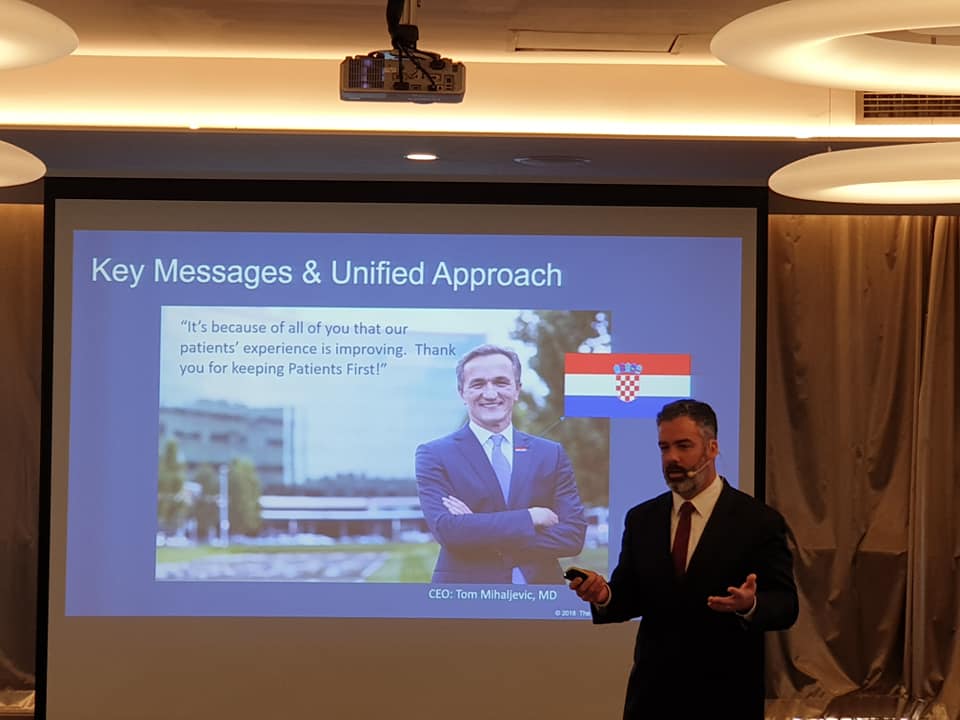
In particular, I was impressed to learn from Joe Sweet - Cleveland Clinic - despite their immense size and reputation - they're still dealing with challenges that most private clinics and hospitals face - generating interest, converting that interest into patient bookings, and making the most of the patient experience to further improve treatment results, reputation and revenue. He had some excellent examples of how they approach those challenges and I saw the same principles could be applied to local clinics & hospitals.
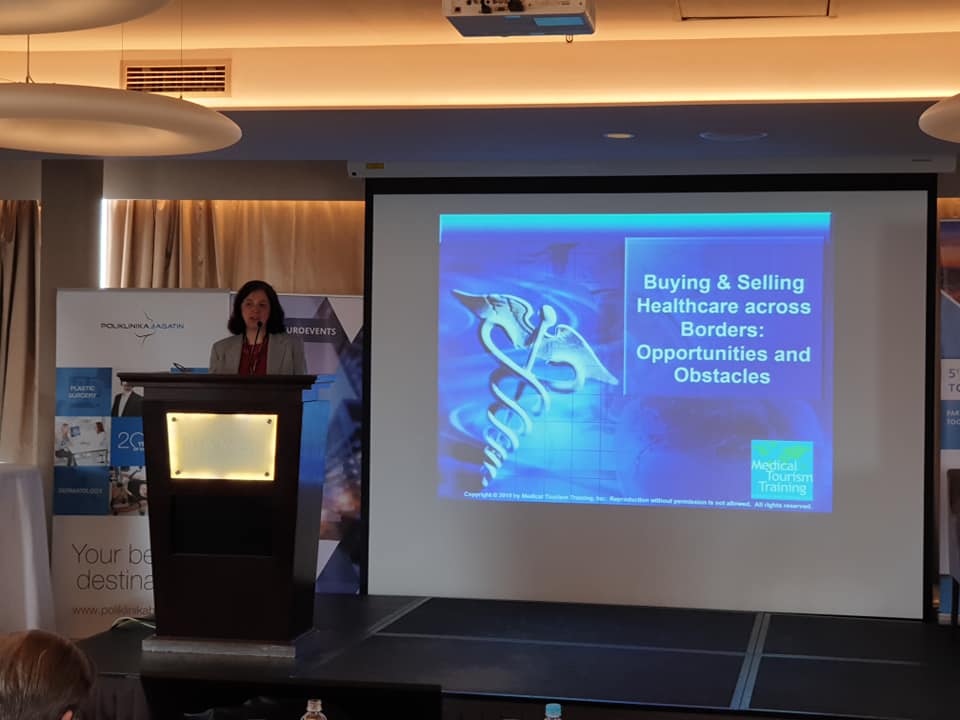
Elizabeth Ziemba covered the changing market of reaching individual patients towards reaching larger groups, national companies, insurance agents and governments instead, a trend I too see happening worldwide currently, especially with private Asian clinics.
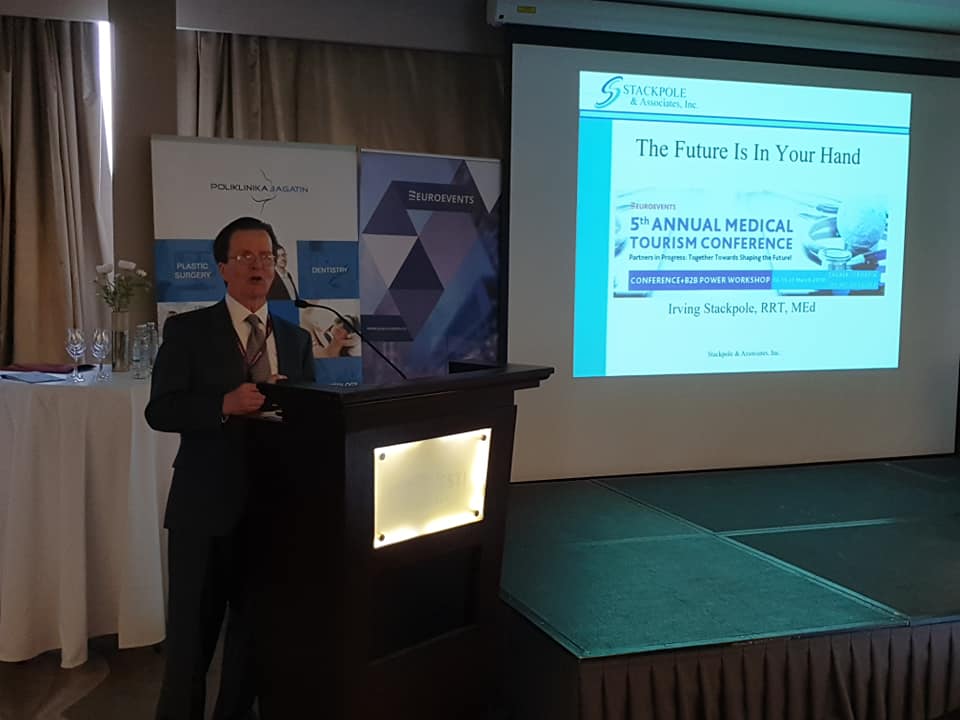
Irving Stackpole demonstrated the changing face of "medical travel" and how medical travel may not be as necessary as we think in the near future as personalized healthcare becomes more readily and affordably available through the rise of new healthtech capabilities. I am very aware of this developing trend, that will cause a number of clinics & doctors to close their doors to patients if they don't prepare well for this new digital era.
My colleague, Alexander Zakucia brought a new topic to the table at healthcare conferences - the call centre and how to covert more patient leads to bookings - I haven't seen that presented elsewhere and was glad that it was a well-received topic by the attendees present at the event.
Finally, Claudia Mika demonstrated the positive effects of quality standards and accreditation on the overall patient experience. We're both advocates of bringing the highest-level medical quality options to the medical traveller, and am glad that she continues to remind medical tourism providers of the impact of how an optimized patient journey can be through keeping to standards.
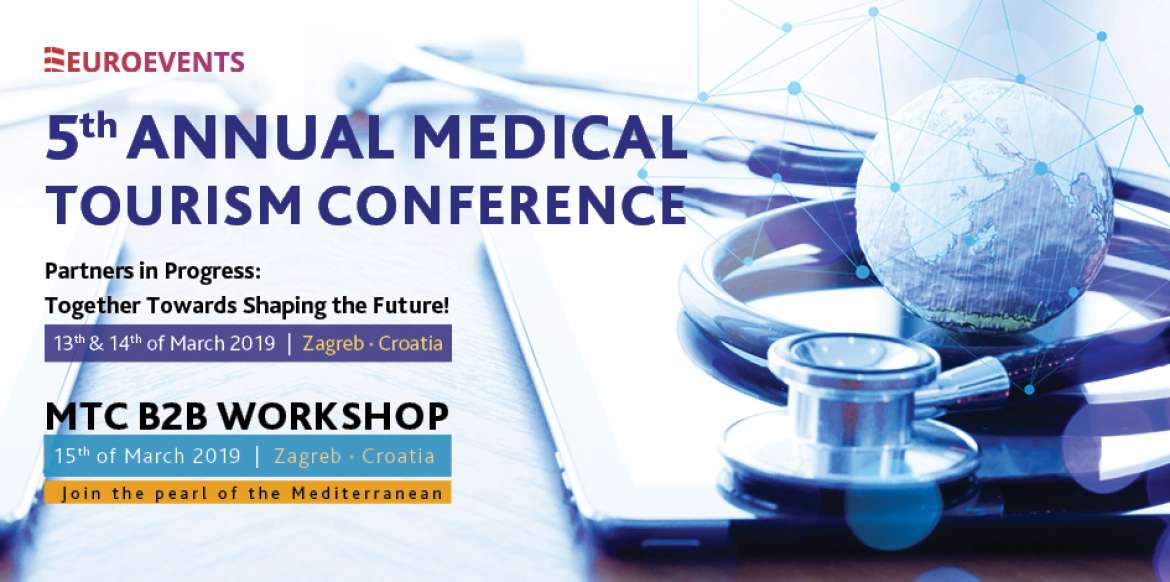
2. For our readers who are unfamiliar with you, tell us briefly about your background in the medical tourism industry.
I came into the "medical travel" industry completely by accident. As a professional musician, I managed the website for my Celtic rock band, and was asked by a doctor friend in Slovakia to help with his website and build a "fan base" for his clinic. I had never before heard of the concept that people could travel abroad for medical treatment.
For my friends' new website, I did a bit of research and saw that Brits were increasingly travelling to Hungary and Poland for cheaper dental treatment options. So I set up a website called dentalholiday on a co.uk domain.
To our surprise from a 3 person dental clinic, we quickly developed into Slovakia's leading dental clinic for international patients within just a few years reaching over 10,000 patients - despite Slovakia not being known at all as a health choice destination.
The main hurdle was proving to potential patients that despite the cost savings, having treatment abroad offered them an even higher level of quality than their own home clinic. I created a simple model based on hard facts to prove this to patients, and the idea worked magically.I'm a fan of using data to manage many decisions I make both professionally and personally, and through a joint partnership with my friends in Google who were intrigued by my model of reaching patients, we developed a clinic rating that assesses almost half a million clinics & hospitals worldwide, to help patients make a transparent, safer choice of private healthcare.
Since then I personally work with a number of clinics & hospitals throughout the world, simply implementing what I've seen work elsewhere, helping them solve challenges and produce measurable results.
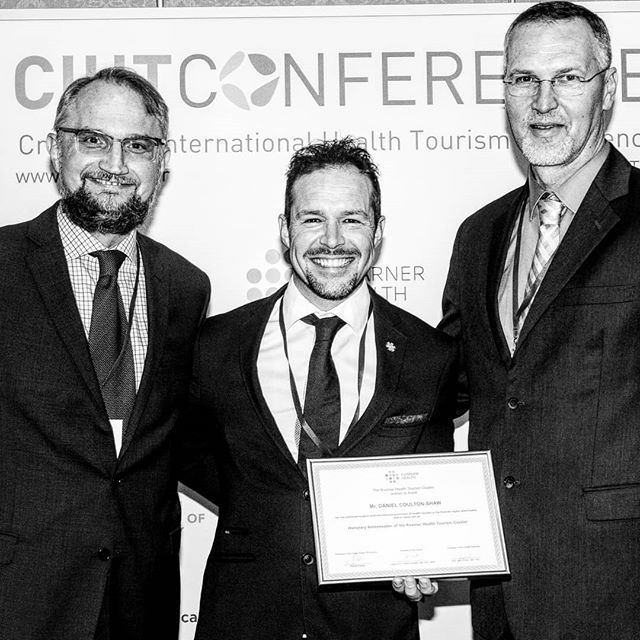
3. You are a regular visitor to Croatia, working with many clinics here. How do you view the industry here, and how has it changed in the last 5 years?
Something unusual is happening in Croatia. Elsewhere I've seen governments and associations pushing clinics and hospitals to "step up their game" and make the region more attractive for medical travellers. But in Croatia, I've noticed much more of the opposite - a cluster of private clinics & hospitals pushing governments & associations to "step up their game" and support them in making the region more attractive for medical travellers.
This reminds of progressive countries where the authorities have thankfully taken a step back and actually started listening to their people, and turning to the private companies for the direction that bring in huge revenue streams to the regions and countries as a whole.
I am fully confident that if the healthcare sector can make their voice heard enough and some basic changes implemented from the side of the authorities, Croatia has a real chance of becoming the new medical tourism hub of central Europe within 5-10 years.
4. Several experts have said that Croatia has the potential to be in the world's top ten medical tourism destinations in the next 10 years. Do you agree with that assessment, and what needs to happen to make that a reality?
Apart from the obvious geographical benefits - easily accessible from Italy, Switzerland, Austria and former Yugoslavia regions, coupled with the sun /sea/mountain destination perception, I have seen that there is a growing, measurable, perception of "excellence" towards the country in the sports, private business and modern health sectors.
As for making that happen, please allow me to share with you a simple roadmap that I consider to be the way forward.
All my data & research with GCR on over 10,000 patients points towards the fact that today's medical tourism consumer in Europe makes their decision across 3 factors:
1. Price
2. Proximity
3. Perceived Quality
So in the case of Croatia, I see the pricing & positioning of healthcare in the mid-range as are successful healthcare regions in the Czech Republic, Poland, Hungary, Slovakia & Romania.
By "proximity" I'm thinking of "how easy can I get there?" "do they understand my culture/language" "do I feel safe there?" and with Croatia, there's obviously work still to be done. Flight connections, although on the increase over the past 5 years are still not at the level of competitor countries. Ferry connections over from the mid and south of Italy or Montenegro are still not at frequency and speed needed, and the infrastructure for emergency helicopter landings has not been set up.
Many Croatian clinics have proven to be able to work in Italian, however further reputation of solid language abilities in German, Arabic, Russian, Chinese and English needs to be developed among the healthcare community to the level of that of their peers (Hungarian clinics do well with English & German, Polish clinics with Norwegian & English, the Czech Republic with Russian and English).
Potential patients from further afield than neighbouring countries need to be reassured that the Croatian environment is safer and more welcoming than currently perceived and that international standard rights, precautions and partnerships have been set up in case of medical complications that arise after returning to their home country.
As a newcomer, Croatia has no real "proof of quality" reputation yet within elective & advanced medical treatments apart from within the sports community, so I believe that this quality reputation would seem to be Croatia's' biggest hurdle.
Sharing transparent treatment outcome data from the region along with successful case studies and 3rd party proof of quality through ratings or accreditations would certainly help accelerate this process.
Finally, the huge Croatian ex-pat community could be mobilized to speed this up even further - a method proven in the UAE by bringing their ex-pats home through incentivized medical treatment, and in Hungary with supporting talented Hungarian doctors back to work in the country.
5. Let's talk realistic and achievable target markets for Zagreb and Croatia. A recent strategy document for the Zagreb Tourist Board recently identified target countries like Slovenia, Italy, Austria, Germany, Russia, USA and the United Arab Emirates, but not the UK. Do you agree with this assessment, and if not, where do you think the Croatian medical tourism industry should be focusing?
There are a number of strategies that I've seen work in neighbouring countries attracting patients from a wide range of nationalities to them for medical treatment, for example:I know clinics in Hungary that have Koreans as their no.1 patient due to partnerships with the KIA and Samsung factories.
I know clinics in Poland that have Chinese and Africans as their no.1 patient due to partnerships with the local governments and communities.
I know clinics in Slovakia that have Arabs as their no. 1 patient group by supporting the flight route to Arab countries.
However to begin - I would start at home. Meaning, that I'd focus on the ex-pat communities living within Croatia for professional or personal reasons.
Once awareness of affordable, quality and likeable has reached a tipping point locally, I'd consider the untapped medical options of patients in Italy, Serbia, Slovenia, Montenegro, Albania, Bulgaria - so far being reached only for dentistry and low-risk elective treatments.
Then I'd consider the German-speaking market, as an alternative to options available in Hungary & the Czech Republic by proving quality care options.
Only then I'd consider working with the UK & Scandinavian markets - very different markets needing a completed different approach here, but that key would certainly first need to be supported by extra suitable flight connections year-round to be a sustainable business model.
Alongside that, as I mentioned earlier, I'd always consider incentivizing Croats abroad and use current positives such as the sports, pioneers in health and the film industry to drive patient awareness across the globe.
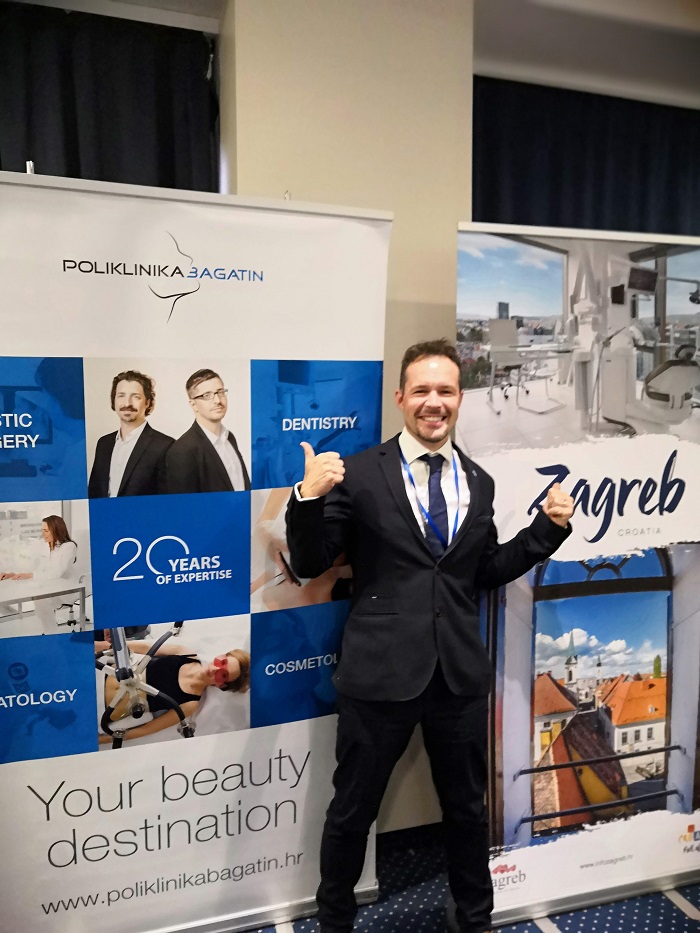
6. You work with a lot of clinics all over Europe. Which ones stand out in Croatia, why and for which types of healthcare?
Yes, I work with a little over 200+ private clinics with Croatia, and it would be unfair to not mention all of them, as by working with my company (GCR) they have demonstrated their commitment to providing international standard medical care for their patients and implementing "best practices" to become better.
I can, however, mention some very unique medical facilities that I feel are unsurpassed worldwide. I have personally visited 1000's of hospitals and clinics on every continent and have rarely seen clinics like Rident, Kalmar, Akromion, Svetlojst & St. Catherines for example - each of them bringing something very unique to the groups of patients they cater for.
Then there are the private healthcare personalities of Croatia - Doctors such as Nemec, Brozičević, Simunic, Gabric and Primorac, for example, who have in the past brought their personal reputation as medical experts to the international table.
I am personally very grateful to Anita Šimunić from Polyklinika IVF, Alfred & Vladimir from Kvarner Health and Ognjen & Tea from Bagatin who have been instrumental in introducing me to the challenges and opportunities of Croatian private medical care.
The Bagatin clinic team had proven a very workable model of local & international expansion that can be implemented into other local clinics as well if they are willing to pay the price.
On the sweat and shoulders of these core private clinics, doctors and medical teams the Croatian medical travel industry is currently held, many at the sacrifice of their personal lives, and I hope that they will come to see their fruits of their efforts 10x in the years to come for their own businesses, the private healthcare industry and the country as a whole.
Apart from future financial or political setbacks that could occur within this region of Europe, I believe that Croatia has a solid 5-10 year window and is well-suited to make it to the forefront of becoming a medical tourism hub of central Europe. After that, all big data signs are showing that private healthcare options will be transformed by personalized, at home technological and scientific advancements beyond our current reach around 10-20 years from now.
When the age of "singularity" arrives - the moment when artificial intelligence surpasses human intelligence, medical travel will become a relic of the past, not only for Croatia but for the rest of the world as well.
I'm sure we'll then have more pressing issues to deal with :-)
7. Finally, I have to ask you about a comment you left on one of my recent articles. The subject was the recently published Zagreb Tourist Board medical tourism strategy document. My article was, Burning Dollars in Zagreb: from Cancelled Conferences to Health Tourism Reports. My article took a critical look at what Zagreb got for its $50,000 investment, something echoed by International Medical Travel Journal Editor Keith Pollard in an article today. You left the following comment on my article last week - do you care to elaborate on it?
I will, entirely free of charge, provide the Zagreb Tourist Board a Medical Tourism Strategy Map to replace the one that they were misleadingly provided.
It would be based on the fact that they would assign a full-time 5-6 person team chosen by me to follow out the steps in the strategy map for the next 2 years along with a budget of what they paid for their previous report for the implementation of the strategy.
I fully support the growth of the region with my whole and knowledge of international medical travel trends and strategies and believe that now, with the momentum of select private clinics and the increased visibility of Croatia in the world - we could actually bring Croatia as a contender as new medical hub of central Europe.
Yes, Croatia has gained a number of trusted friends over the past few years in its efforts to reach more international patients. These individuals, myself included, know the country and it's private clinics well supported by experience and knowledge of working with other countries in similar situations.
I believe that putting together an actionable plan, based on facts with core, measurable milestones and scope for adjustments would be a step forward. This, of course, would have to be consulted together with key private clinic & hospital owners from the region and have the commitment of a task-based, full-time team with an allocated budget to make this happen.
You can connect with Daniel Coulton Shaw via LinkedIN, the Global Clinic Ranking or his Slovakian dental clinic.
To follow the latest in the Croatian medical tourism story, check out the dedicated TCN page.
Irving Stackpole, Elizabeth Ziemba Interview Ahead of Zagreb Health Cluster Seminar
March 18, 2019 - More international medical tourism expertise is heading to Zagreb to help grow the Croatian medical tourism story, as Irving Stackpole and Elizabeth Ziemba host a boutique seminar at Bagatin Education Centre in Zagreb next week.
The number of international medical tourism experts passing through Croatia these days is really quite incredible.
Although covering the health tourism industry is only a small part of what I do, it seems that every time I look at it, there is another global expert in town. I got to meet and interview Joe Sweet, International Patient Experience Director for the world-renowned Cleveland Clinic last week. Sweet was one of 22 international speakers at the 5th Annual Medical Tourism Conference in Zagreb, speakers which also included Irving Stackpole and Elizabeth Ziemba. You can read more about the conference here.
I had already been in touch with Stackpole and Ziemba by means of an email interview ahead of their next visit to Zagreb, on March 26.
While there are numerous conferences in the field of medical tourism in Croatia, there is even more happening in the background, with the Bagatin Education Centre in Zagreb holding a range of events. This is where I met medical tourism branding guru Ilan Geva at a recent workshop, and where Stackpole and Ziemba will be hosting a workshop on Taking Cluster Development to the Next Level: Changing the Course of Medical Travel.
1. It is great that you are coming to Croatia to share your expertise with local stakeholders. Tell us how the trip came about and anything else you will be doing while here.
IRVING: While we met Ognjen Bagatin years ago, it was at the World Health Care Congress in Washington DC in 2018 when we had an opportunity to discuss with him in detail the evolution of the health tourism markets in Croatia. Developing a workshop in Croatia came from that conversation.
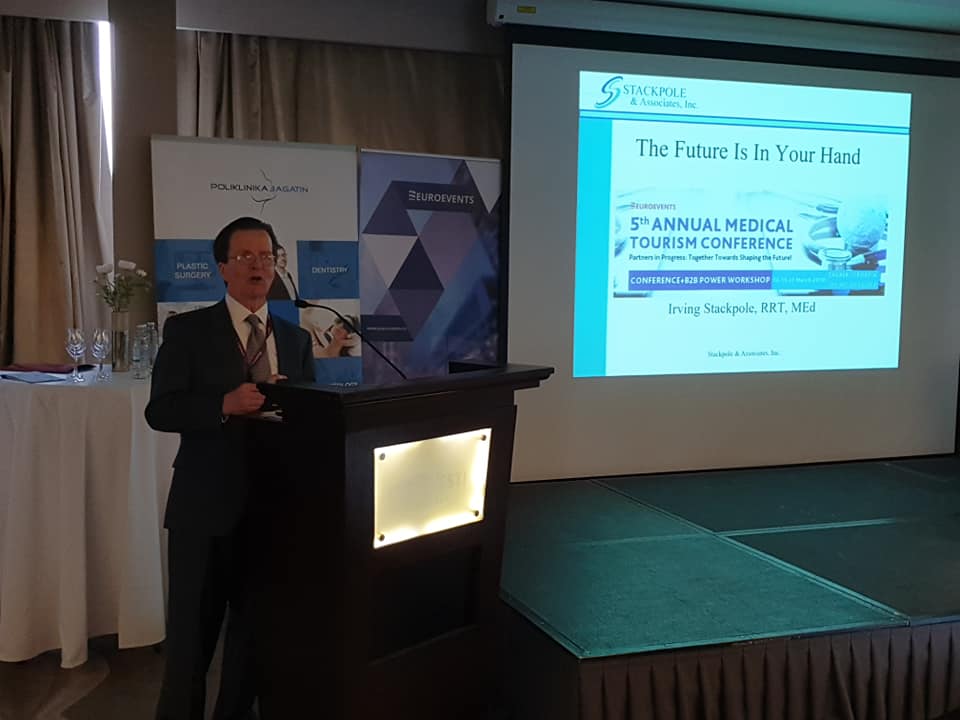
2. You come at a time when the Croatian medical tourism industry is starting to get organised. The recent Health Spot Croatia conference included all the major stakeholders. How would you assess the current state of the medical tourism industry here, and what is the potential?
IRVING: Only having been to Croatia one time, to Opatia, it would be difficult to draw conclusions from that experience. From what we understand so far, there is ambition and high level of interest; these are always good initial ingredients to success!
ELIZABETH: Having just returned from a two-day conference in Zagreb, we have gained a bit more insight into the status of the health and medical tourism sectors in Croatia. While we have much more to learn and explore, it is clear that many key players are interested, engaged, willing to work hard and learn about the opportunities and obstacles.
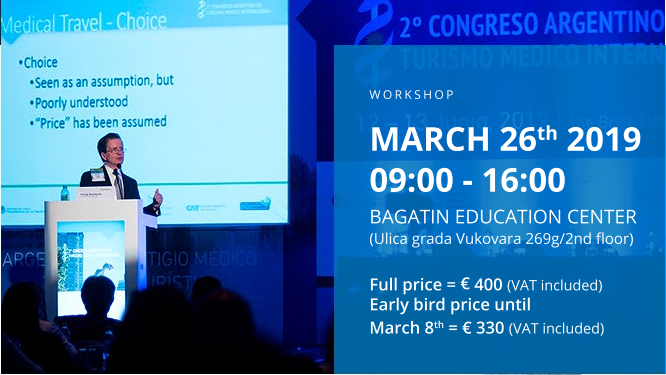
3. What do you see are the competitive advantages that Croatia has in the global market?
IRVING: From what we understand, there is a high level of proficiency among the health and medical professionals in the country. And apparently the private healthcare infrastructure is also very advanced although we have not as yet had an opportunity to experience this firsthand. Quality of the healthcare services is of course paramount.
ELIZABETH: The country has a solid base of tourists upon which to build and enhance the overall reputation and brand of the country. It has made some progress in terms of the availability and quality of dental and cosmetic services so that with good leadership and cooperation from the clusters, valuable lessons can be learned from what has been achieved to date as well as guidance for what can be expanded and improved in the future.
4. You have vast international experience in medical travel and have both travelled the world. As Croatia takes its first small steps in the industry, which countries should it be looking to learn from, and why?
IRVING: While there are easy comparisons between countries such as Costa Rica, the hard-learned errors of every country or region can be useful to Croatia. It is essential that Croatia develop its own „unique sales proposition“ based on its assets and differentiators. We will be focusing on this in our workshop.
ELIZABETH: Costa Rica is a good example because it is of similar size in population and geographically as Croatia. Plus both countries have access to close markets in other countries – the US and Canada for Costa Rica and Italy, Slovenia, and other neighboring countries for Croatia. Costa Rica has an interesting leadership model that has good lessons to share with Croatia.
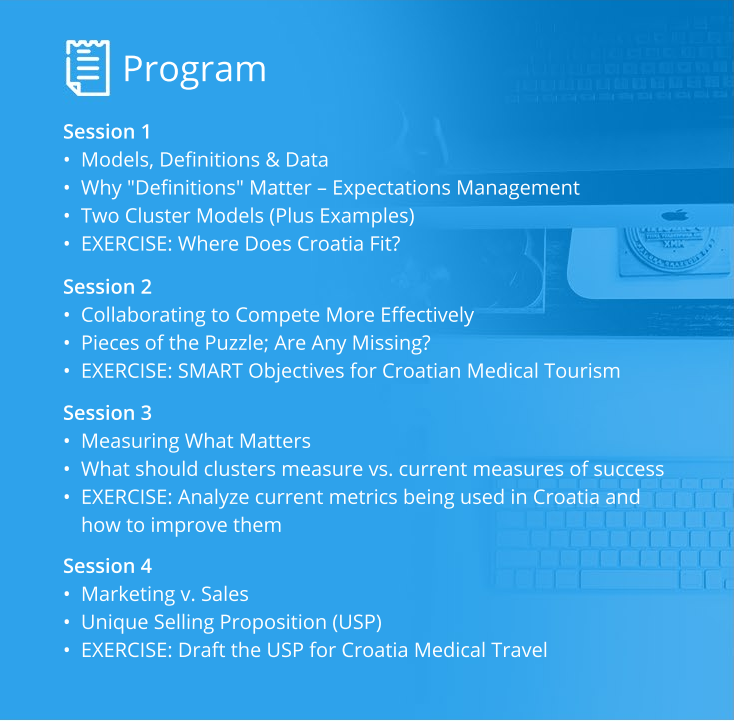
5. Your workshop theme is taking cluster development to the next level. Croatian health tourism has several clusters - Kvarner, Zagreb and Pannonia for example - but it is struggling to develop a national brand, which is surely the priority. How do clusters work together to strengthen the national brand while developing their own?
IRVING: In our workshop, we will focus on what a cluster is and what it is not. All of the organizations calling themselves „clusters“ are probably not clusters but are types of marketing collaborations. The functions of successful clusters, such as competition, monitoring and measurement will be emphasized. And regarding the national brand of Croatia, it is unlikely that medical tourism will define this for the country. Rather, understanding the attraction of Croatia in the travel and tourism markets, the extraordinary loyalty of the diaspora and the underlying assets of the country – these will provide an opportunity to leverage a medical tourism brand for Croatia.
ELIZABETH: This is an excellent question which we will answer during our workshop. The magic formula depends on strong leadership, a clear vision for the country's national brand, the ability to collaborate and compete while maintaining a unique selling proposition. Each of these components requires hard work.
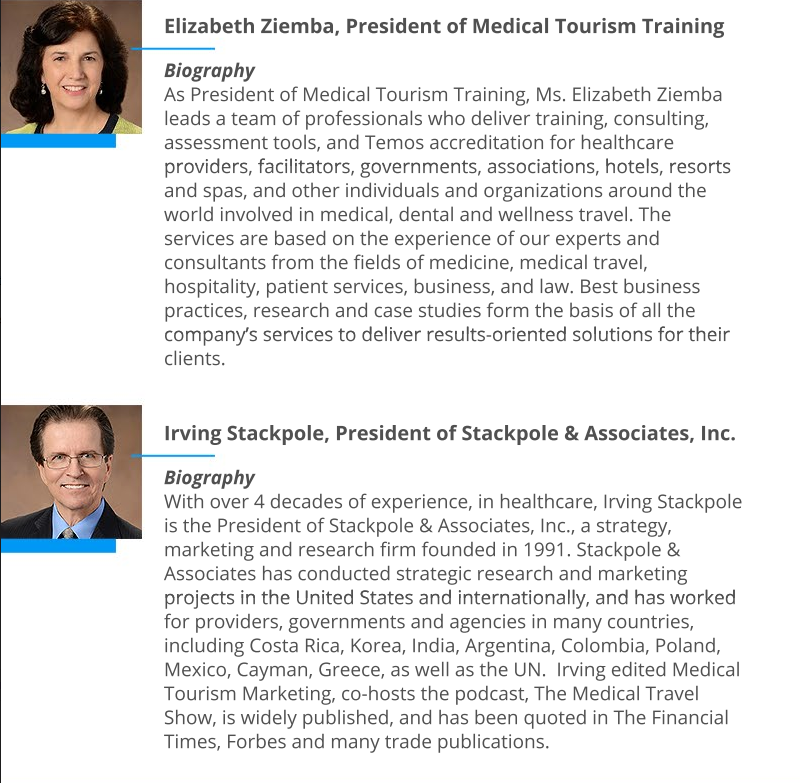
6. Where do you see Croatian health tourism in 10 years, and what needs to happen to get it there?
IRVING: We certainly don't have a crystal ball! There are 1000 small steps that can be taken to improve the markets for health tourism to Croatia. Based on the energy and commitment we have witnessed, it's clear that Croatia will take 1001.
ELIZABETH: We would be happy to be hired to create a health tourism strategic plan for the country. Both Irving and I have experience creating strategic plans, marketing plans, and other road maps for countries, regions, and cities. It is a complex process that requires research and knowledge.
7. For those thinking of attending the workshop, explain what attendees will take home from a day with you.
IRVING: First and foremost, a clear eye and sober look at the international health tourism markets as they relate to Croatia. Second a structured approach to the evolution of a cluster in Croatia which will further the goal of developing Croatia as a premier health tourism destination. Finally, the skills needed to create a unique sales proposition at the clinic or national level, which will improve your competitive position.
ELIZABETH: Whether members of a cluster, government representative, or healthcare provider, participants will learn more about how clusters do or do not function; how to collaborate and compete within clusters; as well as to have the tools to create a unique selling proposition for the country and their organizations.
For more information about the seminar and to reserve a place, contact Bagatin Clinic.
To follow the momentum of the Croatian medical tourism story, follow the dedicated TCN page.
Zagreb Featured in Latest Netflix Series
The Manduševac fountain at the main square in Zagreb at nine o'clock in the morning. Women sit at the tables around the fountain and drink coffee, while police officers with German insignia patrol around. Two blue parachutes drop down right in front of the fountain. A man and a woman with a helmet emerge, and from a nearby tent a man's voice can be heard: "Cut!" The scene was shot from the third attempt. What was it all about? Zagreb is the stage for the latest Netflix series called "Medical Police", in which two physicians, played by Erinn Hayes and Rob Huebel, uncover a deadly virus in Brazil and the US government recruits them to travel the world to find a cure, reports Večernji List on March 18, 2019.
Although it all sounds very serious, the series is actually a comedy that will be filmed in the Croatian capital for ten days. Producer and screenwriter Krister Johnson says they were looking for locations for a long time, and Zagreb has proven to be perfect due to its authentic architecture. “The people are extremely kind, and we are delighted with your local food,” says Johnson.
Ivan Petrušić, the producer at the Welcome Production, who is in charge of the filming in Croatia, explains that Zagreb will play Riga, Florence, and even an airport in Tampa, Florida. The state archive building has already pretended to be a college, while the scene shot at Ban Jelačić Square was supposed to take place in Berlin.
“We started the cooperation in October, and Zagreb was selected because it can play several cities,” says Petrušić.
Director of the Zagreb City Tourist Board Martina Bienenfeld is happy that Zagreb will play itself in some of the scenes as well since about five per cent of European tourists choose their vacation destinations according to their favourite TV series or film.
The project also involves Croatian extras, hairdressers, assistant directors of photography and other crew members.
Zagreb has already been featured in many international productions. The best-known film shot in Zagreb is probably "Sophie's Choice" in 1982. Since the producers have promised that their will tell their colleagues about the Croatian capital, perhaps there will be more such projects in the future as well.
Translated from Večernji List (reported by Ana Tenžera).
More news about filming in Croatia can be found in the Lifestyle section.
Pink Day Through Rosé-Tinted Glasses of Sanja Muzaferija
March 18, 2019 - One of the most eagerly-anticipated Croatian wine events of the year is almost here again. Organiser Sanja Muzaferija talks Pink Day 2019 in Zagreb.
Pink Day returns for its 7th edition later this month. Tell us about the concept and how it got started.
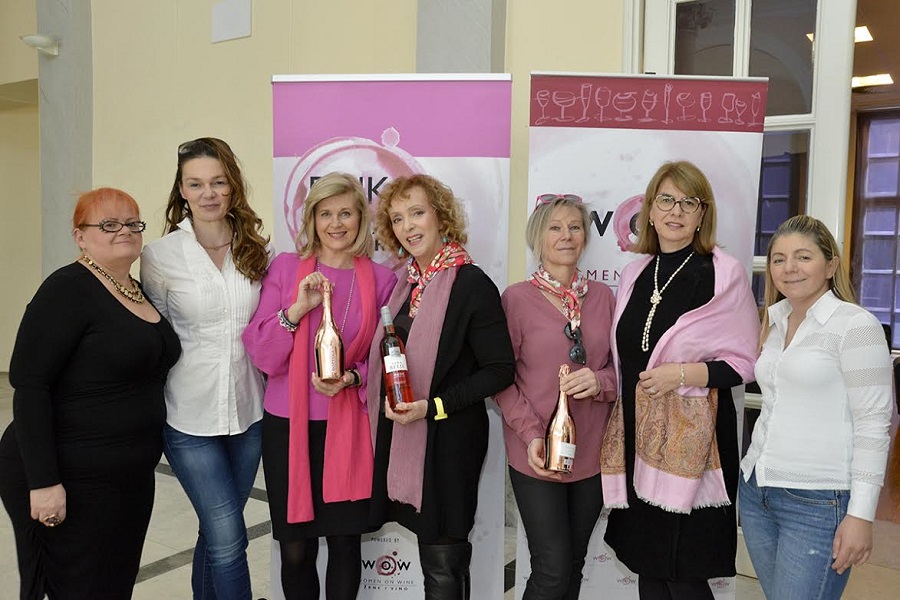
On the 30th of March, Pink Day returns for its 7th edition in Mimara Museum in Zagreb. At the WOW (Women on WIne) association, we have been working hard for almost eight years, meeting at least once a month to taste, discuss and study wine.
So far we have organized or co-organized more than 100 events and on various occasions tasted many interesting wines, promoted Croatian wines, learned about foreign wines and varietals; enjoyed, socialized, and visited wine cellars and vineyards both in Croatia and in Europe.
Our most important and biggest yearly event, Pink Day Zagreb, has rocked the wine scene a bit, especially when it comes to women and rosé wine. It was my idea to slightly provoke the predominantly male wine scene - since seven or eight years ago women in the wine world were still rare birds and more often than not mocked for not being able to differentiate anything but whites and reds.
In fact, women are active in wine business and industry, women own wine bars, work as sommeliers, oenologists, in wine marketing…so we wanted to somewhat subversively start a Festival that highlights rosé wine – like Barbies playing with pink colour – in spite of everybody thinking both women and rose wines are frivolous. And see what happens. What has actually happened is that rosé became highly popular and that women working in wine are much more appreciated that they used to be.
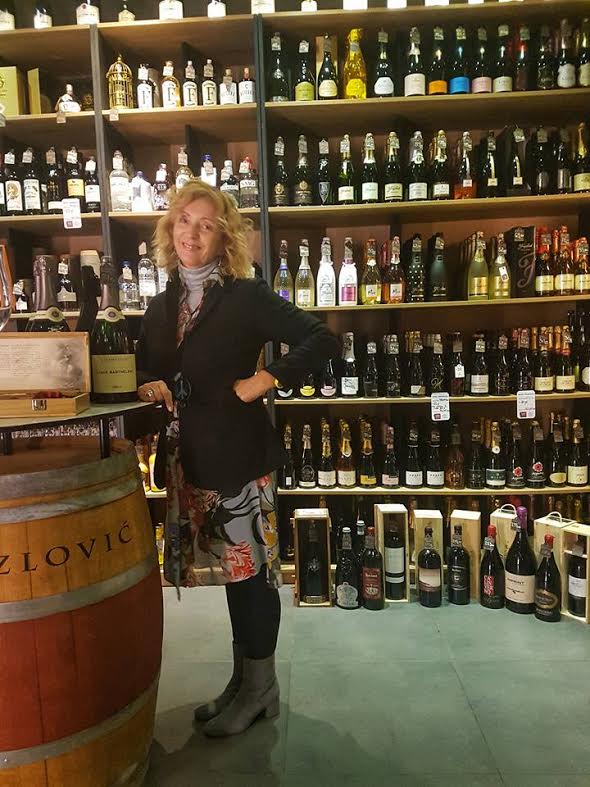
Pink Day has grown year on year. What can we expect from this year's event?
Every year the focus is slightly different. In the beginning, we were trying to show the audiences and the wine community that we mean business, so we were serious, “scientific” and scholarly with the international experts who we flew from around the world over to do workshops at Pink Day.
Over the years we have changed and shifted the focus every year – always trying to stay fresh and a little different from other festivals. Sometimes we focus more on extra virgin olive oil within our Green in Pink Festival in Festival, but I think it is safe to say that we constantly grow. Not in numbers, because we are a boutique festival with no intention to gain more exhibitors due to the Museum space which we intend to keep as our home, but in quality. And popularity. I think there is hardly anybody who is anybody in the wine business that doesn’t know about WOW and Pink Day.
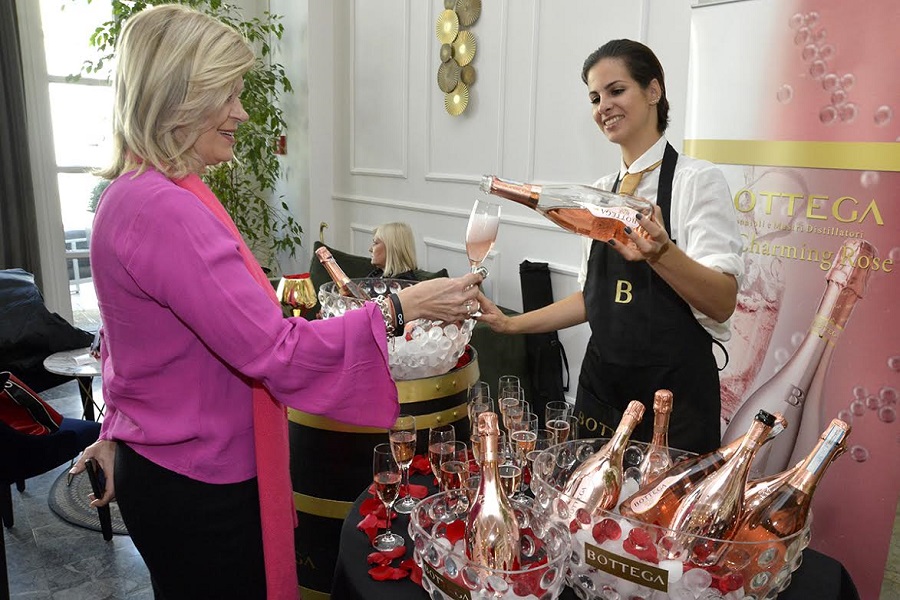
With the focus shifts of Pink Day, we hope to remain interesting and fun. This year’s event is focused on Croatian rosé wines and is designed to be even more optimistic, fun, feminine and fashionable than before. Since we have noticed that the exhibitors try hard to be creative with their space and that both their clothes and their tables are regularly adorned with pink details and flowers – we decided to give out an award for the best table of the Festival. The award is pink stilettos by Jimmy Choo worth more than one thousand dollars. We think it will motivate exhibitors to be even more creative and that it will contribute to the overall atmosphere. Although, we are not complaining – our festival is always lively, happy, full of great wines and beautiful women.
Tell us a little about the rosé scene in Croatia. What are the main trends, grape varieties, and what does Croatia do differently?
Croatian rosé is somewhat different because of the grape varieties and terroir – from, French rosé from Provence or Spanish or Hungarian... But so is every wine from some other wine. Nothing specific there. I think Croatian rosé can easily compete with any other from the world.
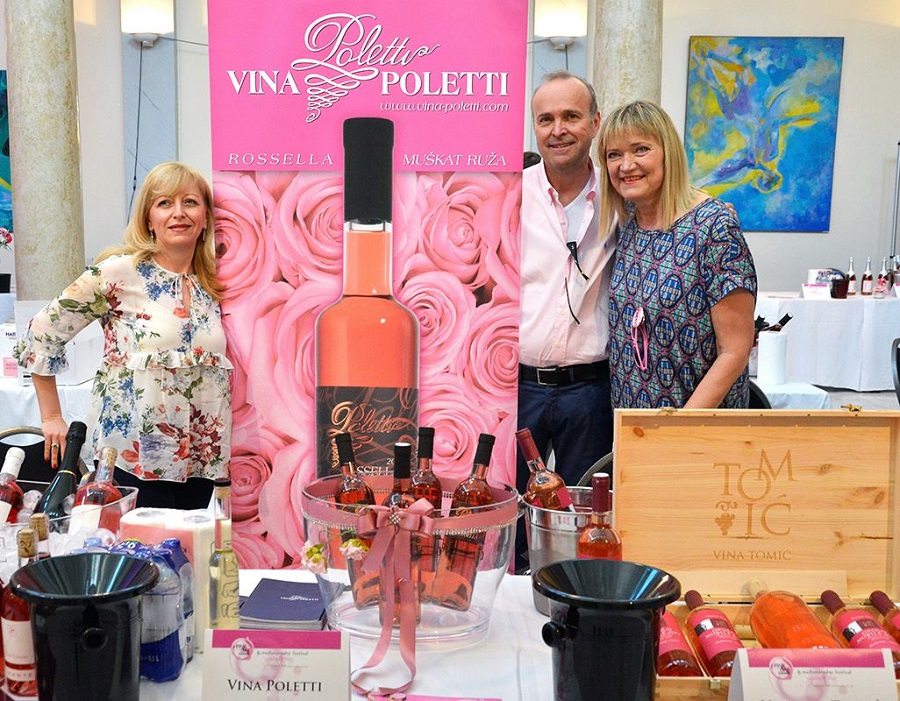
And, of course, the wines from Istria or the ones from Slavonia; those from Kvarner or those from the surroundings of Zagreb or the ones from the south are not the same…That’s exactly why you have to come to this years’ edition of Pink Day. We have prepared three interesting workshops – covering three different areas of Croatia. “Istria & Kvarner” by Mario Meštrović, “Slavonija and Podunavlje” by Dario Grabarić and “Pink Souih” by Jelena Šimić Valentić. Total exploration of Croatian rosé was this year’s topic.
Pink Day was the first public appearance of the wines of Jo Ahearne MW, the first Master of Wine in Croatia a few years ago. Tell us about her Rosina and also the impact of her decision to make wine in Croatia.
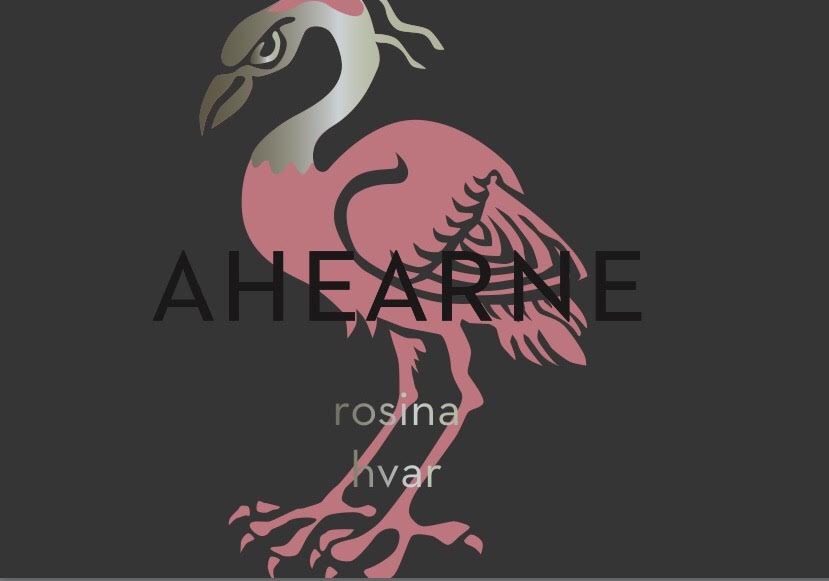
It would be much better if Jo would present her wine herself. It is so great to have such an expert and such a nice lady as Jo here in Croatia. We have collaborated with her on a few occasions, not only at Pink day and it was always nothing but pleasure and delight. Just as all her wines. My favourite is Wild Skins that she makes so perfectly. She deeply understands wines and she definitely knows what she is doing, regardless of the colour of the wine. Many winemakers decide to wait until Pink Day to fill their bottles – so Pink Day is a sort of En primeur festival for rosé wines.
As I understand, Pink Day is not just Croatian winemakers. Which other countries will be represented this year?
We have many different countries participating. There will be French, Italian, Austrian, Slovenian and Serbian wines present –as far as I know. Croatian wines are the majority, however – which is in perfect tune with this year's orientation. Next year will be somewhat different again.
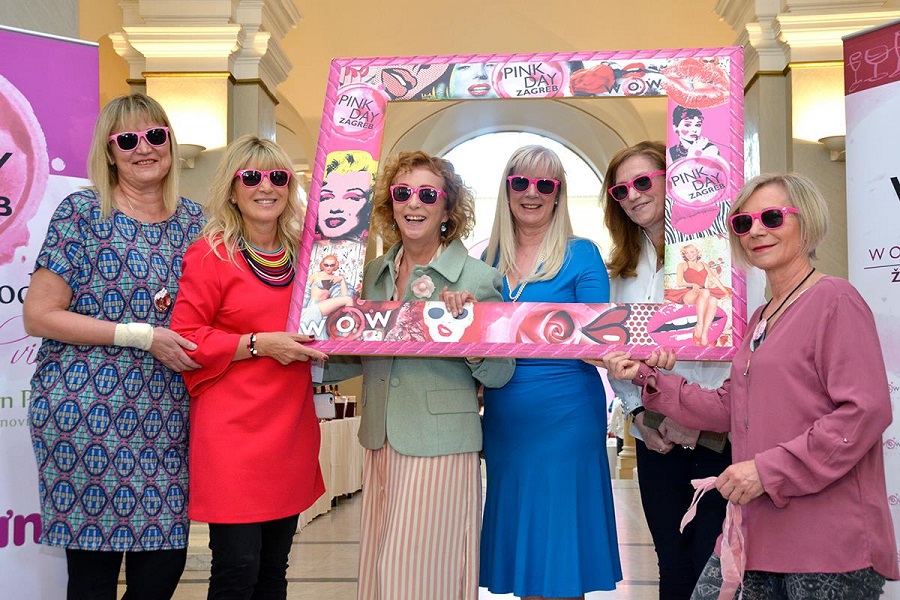
Your thoughts on how the Croatian wine industry is developing in general?
Shen I first started with WOW and today – incomparable. Much, much better now. Both our wines and the export and the marketing and branding. But there is still a long way to go. It could be much better branded abroad, to begin with. But, no criticism now – we are approaching the most optimistic and fun Festival – Pink Day. For one day in a year we should all deliberately wear pink glasses and enjoy.
You are a multi-talented lady wearing many hats, one of which is running Women on Wine (WOW). Tell us a little about that and how new members can get involved.
My background is first and foremost journalism. I have been writing about theatre, fashion, film – and wine is my hobby and my passion. Pink Day evolved from the idea of WOW. The women who surrounded me at the time in the association when I have just started it – were working very hard and earned no money. Just like me, but that was my choice. It wasn't necessarily theirs.
So I wanted to create a commercial festival in order to give primarily them (and myself) an opportunity to earn some money and do something good for the wine scene – at the same time. That is my characteristic. Typical me: trying to do as many things at the same time as possible and trying to aim for the win-win situation.
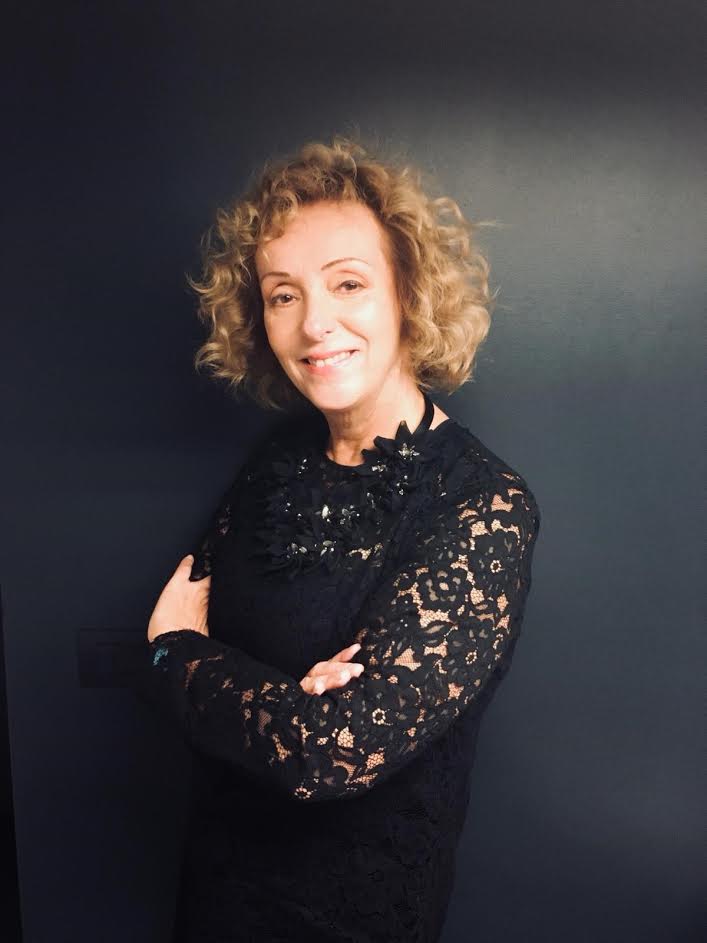
In the meantime, some of the ladies left and now they are successfully doing businesses of their own while I am still trying to help out the winemakers, entertain and educate the members of WOW... But, I am not sorry – WOW is steadily growing – there are almost 200 of us in Zagreb, Split and Rijeka. Everybody can join as long they are female – (maybe we are the only women-only club in Croatia) and pay the membership fee (700 kuna per year in Zagreb, 350 if outside Zagreb)...And - Pink Day is doing well, it is very successful and it does earn some money. Clearly – it makes everybody involved, including the visitors, happy. Me happy!
Working hours of the Festival12 (noon) – 7 p.m., March 30, 2019.
Mimara Museum, Zagreb
150 kuna entrance fee
Take a look at a video overview of the 2015 Pink Day below:
Follow the Pink Day story on Facebook.
To learn more about Croatian wine, check out the Total Croatia new information site - Croatian Wine in a Page.
Kolinda Grabar-Kitarović Discusses Investment at InvestCro Conference
The InvestCro conference was opened by the editor-in-chief of Poslovni Dnevnik, Vladimir Nišević, who stressed the fact that this project opens up discussions topics that are of great importance to our society.
As Poslovni Dnevnik writes on the 18th of March, 2019, the "InvestCro: Investment in (Non) Opportunities in Croatia" conference, whose central theme is rather depressingly inspired by missed opportunities, ie planned investments that have not been realised, as well as obstacles investors encounter and also possible improvements to the arrival and treatment of foreign investors, is being held at the Westin hotel in Zagreb.
This conference is the second in a series of four conferences as part of the all-year-round multimedia project headed by Croatian news and media outlets Večernji list, Poslovni Dnevnik and 24sata entitled "InvestCro: Kako do ulagača" which discusses how investors can be attracted.
The President of the Republic of Croatia, Kolinda Grabar-Kitarović, stated that the current results of foreign investments don't match the desired image. She said that lessons should be learned from the mistakes alreayd made to avoid repetition.
President Kolinda Grabar-Kitarović said that Croatia was missing out on so-called Greenfield investments and has proposed five specific guidelines to the Croatian Government in order to attempt to tackle that problem.
"The results of direct foreign investment don't match the desired image. In 26 years, 33.5 billion euros has been invested in Croatia, but the problem is that the investments were mostly Brownfield [investments] and focused on ''nontradeable'' sectors. We're missing out on Greenfield investments, investment in the production of goods and services that will create quality jobs and be more export-oriented,'' said the president at the InvestCro conference in Zagreb.
She feels that the direction of development can be directed in the desirable direction if the appropriate lessons learned from the mistakes made are properly taken into consideration. "First of all, I'm thinking of investment woes, the shortage of people involved in attracting investors, the lack of approach planning and coordination," she said.
On their way directly from Pantovčak to the Croatian Government are five key guidelines for the faster and easier growth of investments in Croatia. It is necessary to consolidate the competences of all those responsible for attracting FDI (foreign direct investment) at a single national level, to create an investment attracting strategy aligned with other economic strategies, to focus on new models and soft investment incentives for added value and to constantly create an attractive investment climate.
The five recommendations include the continuation of work on a better overall image of the Republic of Croatia and the promotion of the country as a destination for investment, not just a tourist destination. In this regard, Grabar-Kitarović announced that the working group who deal with branding Croatia will come out with guidelines within a month.
"We decided to do something for our society, as well as for those who will still be here when we're gone. Without healthy investments, we will remain without investors, and for this reason we have just decided to speak [on the subject] through various conferences, just like this one today.
''I hope this conference will contribute to the progress of Croatia,'' Niševic said.
'' the last two years, two-thirds of greenfield investments in the EU took place in just six European countries. I believe that Croatia will raise its rating in 2019 and come over to the side of these six countries, with the help of new laws and a better quality framework for stimulating investment,'' said Minister of Economy Darko Horvat at the InvestCro conference.
"The share of investment in GDP is growing, we're at the average of EU countries. The third quarter in 2018 was, according to current information, optimistic, as there was a 4.9 percent rise. Croatia needs economic growth of five percent. Step by step, we're strengthening competition, there is no instant solution, and changes need to be deeply rooted.
We should help entrepreneurs to retain as much of their own funds as possible for the new investment cycle. We're digitising business and the state, in order to reduce the burden on entrepreneurs. Therefore, I expect growth in production, especially in the private sector. Through the Investment Incentive Act alone we attracted 16 billion kuna, with 12,750 new jobs being planned. We know exactly what kind of educational profile we need, we need to make sure we've got young people who will be employed there. We need a synergistic effect with cities and counties," the minister said, hinting at the need to all be on the same level.
"We want investments with new technologies and added value. Despite the global boom in the digital economy, less than 20 percent of such investments fell into the ICT sector. We are not only looking at the volume, but also the character and type of investment, as well as the quality of jobs which is what our young people who are leaving are looking for abroad. We need a bit of courage and some enthusiasm in order to turn these issues into a chance.
The Ministry of Economy has announced five new tenders, which is an innovation opportunity for domestic entrepreneurs. I'm sure that 303 million euros will be invested in Croatia's investment potential and that this year will end with development,'' concluded Horvat, adding the encouraging fact that this week, the representatives of several Swiss companies are browsing northwestern Croatia and looking for business zones that are ready for them to move part of their business to.
Mladen Fogec, president of the Association of Foreign Investors in Croatia, noted that Croatian pessimism could affect foreign investors very much.
"The rating agencies are constantly positioning us at the end of the second-third on the doing business scale, but they all get their perceptions from talking to our political parties, non-governmental organisations, and we're very inclined to being negative - we have to turn to optimism. When it comes to the perception of corruption... we're not in the best position, but when you ask a person whether or not they bribed someone, the answer is always that they didn't. Please spread optimism because Croatia has a lot of potential. In principle, there's an enormous problem with our mentality, the capacity for change isn't big enough, we're still not ready to start to change, and we're living in the era of digitisation and computerisation,'' Fogec said.
"We've spent far too much time wrestling with the past, we spent an actual minister of economy on Agrokor, and her successor is now spending most of his time trying to deal with Uljanik, which is also grappling with the past. We need to deal with the future. It's good that we have introduced a law on strategic planning. It's not a question of whether foreign investors want to come to Croatia, but whether or not we actually want foreign investors,'' claims Fogec.
He noted that the association he leads didn't issue the so-called ''white book'' for business for 2019 because the problems still remain exactly the same as they were before. "Nothing has changed, or it has changed at a slower rate compared to changes in neighbouring countries, so our latest edition is still valid," he concluded rather sarcastically.
For those of you who understand Croatian, here's a video of what has been said, suggested and discussed at the conference:
Make sure to follow our dedicated business page for more on doing business and the overall investment climate in Croatia.
HNL Round 25 Recap: Hajduk Jumps to Fifth, Rijeka Tops Osijek
March 18, 2019 - The 25th round of the Croatian First League was held from March 15 to 17, 2019, and saw Hajduk inch even closer to the top three, Rijeka topple Osijek, and Dinamo claim another win.
Dalmatian Students to Uphold Klapa Traditions in Zagreb
Far from the calm yet rugged shores of Dalmatia in the Croatian capital of Zagreb, Dalmatian students are set to showcase Dalmatia's rich history with traditional klapa singing at the seventh student klapa festival.
As Gordana Igrec/Morski writes on the 16th of March, 2019, Klapa music can be heard up and down the Dalmatian coast and is an intrisic part of Dalmatian culture. From Dubrovnik and the extreme south of Dalmatia up to northern Dalmatia, many different groups exist from area to area and from city to city.
The word klapa means ''group of friends'' and this type of a cappella singing, which focuses mainly on romance and love, as well as on the sea and various parts of Dalmatia, traces its long roots back to littoral church singing.
The seventh festival of student klapa organised by the Split students' association will be held on March the 23rd, 2019, at the Student Center in Zagreb (Studentski centar, Savska 25), starting at 20:30.
For the seventh year in a row, the festival offers students the opportunity to be part of a traditional and cultural event which works to present the richness of Dalmatian musical heritage to the public and to continental Croatia. All those interested in this type of music are invited to come and showcase their talents and present Zagreb with one of the most influential and recognisable symbols of Dalmatia - klapa singing. There's still time to register.
When one walks the usually busy streets of the very central European City of Zagreb, the sights and sounds of Dalmatia appear a world away. Owing to this festival, the capital will become a hub for the sounds of the city's resident Dalmatian youth, as it has been in previous years.
In this way, Dalmatian students are able to freely continue to cultivate their klapa singing traditions and their culture away from their coastal homes, and further enrich the continental Croatian City of Zagreb, where they have come to study and work, and where many will remain permanently.
Make sure to follow our dedicated lifestyle page for much more. If it's just Zagreb you're interested in, give Total Zagreb a follow.
Click here for the original article by Gordana Igrec for Morski





